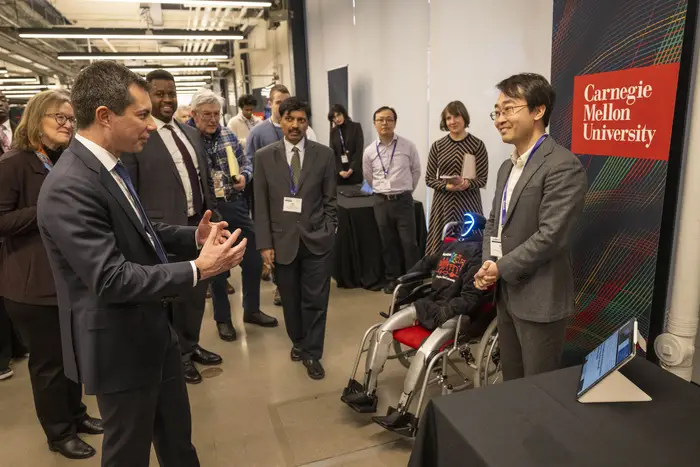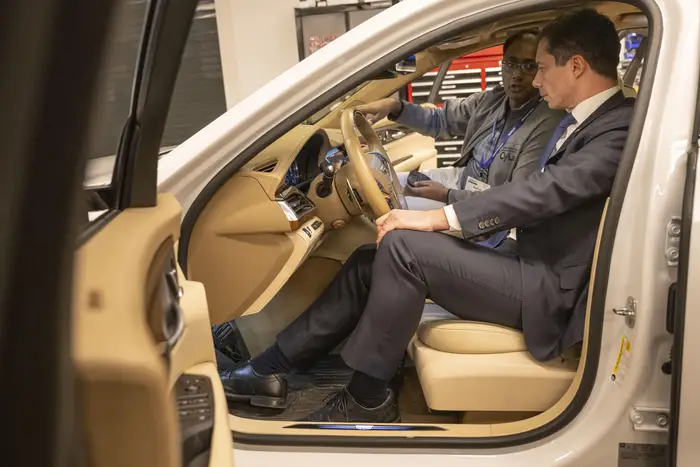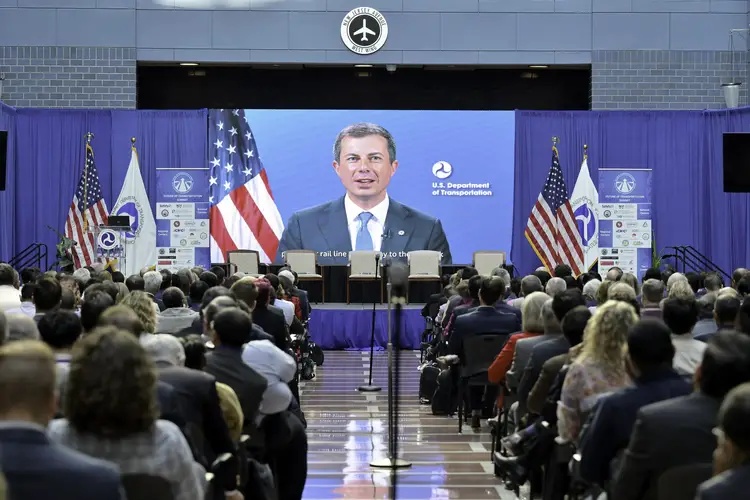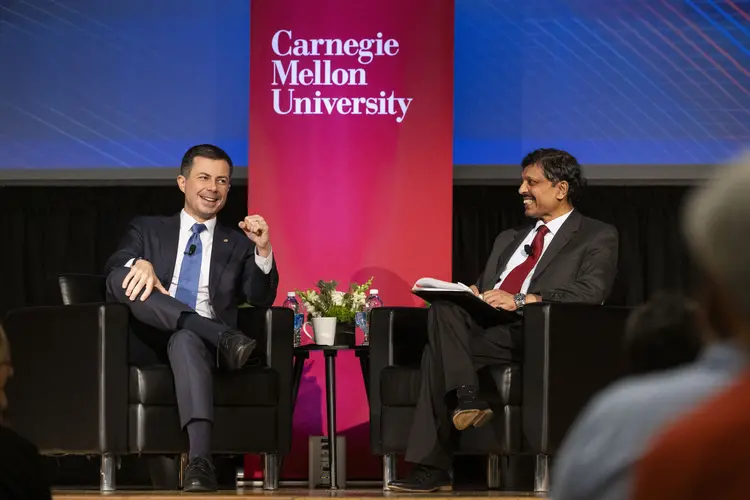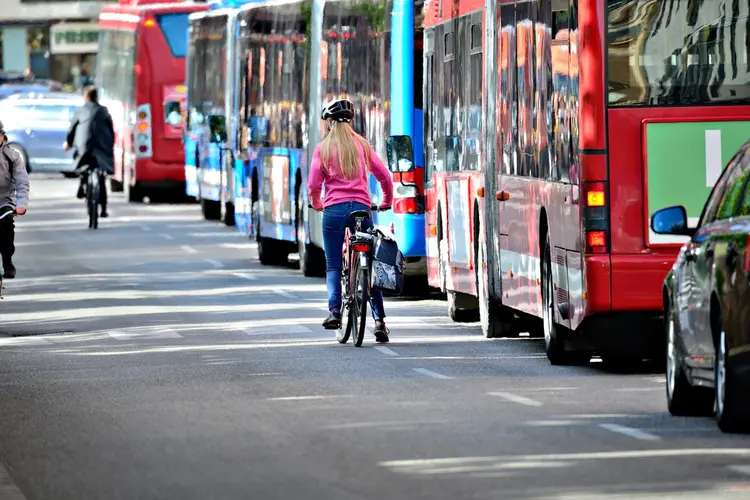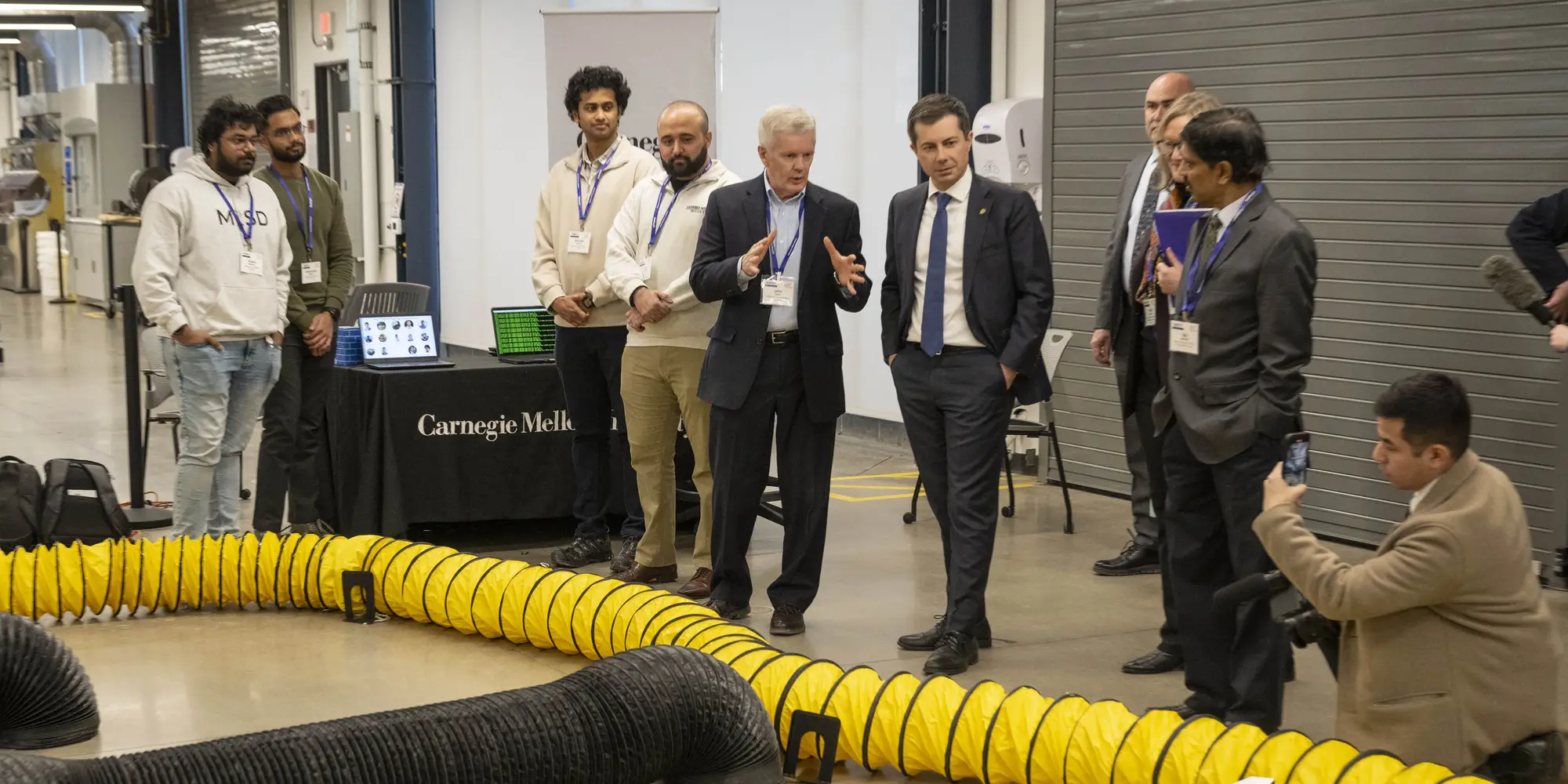
CMU Researchers Share Work with Secretary of Transportation Pete Buttigieg
The transportation secretary saw the latest in transportation innovations at one of his final stops as leader of the U.S. DOT
Media Inquiries
U.S. Secretary of Transportation Pete Buttigieg visited Carnegie Mellon University facilities at Mill 19 today in one of his final stops as Transportation Secretary.
In Pittsburgh to tour the progress of Biden-Harris administration investments across multiple modes of transportation, Buttigieg met with university leaders, community partners and researchers from CMU’s Safety21(opens in new window), a U.S. Department of Transportation (DOT)-sponsored University Transportation Center focused on safety.(opens in new window)
CMU President Farnam Jahanian(opens in new window) greeted the secretary upon arrival for a brief meeting before joining students and researchers.
As part of a day including “trains, planes and automobiles,” Buttigieg said he wanted to see “the latest and greatest” in transportation research while in Pittsburgh.
“It’s probably the least publicized thing that the U.S. DOT does, but one of the most important. What I’m especially excited about is the lifesaving potential of autonomous technologies. You know, the whole journey through automated vehicles in many ways traces back to what Carnegie Mellon and teams achieved in response to a federal challenge in 2007. It’s really exciting to see the light years of progress that’s been made since then.”
Buttigieg was joined by Robert Hampshire(opens in new window), principal deputy assistant secretary and chief science officer for research and technology, Ben Levine(opens in new window), deputy assistant secretary for research and technology and Stan Caldwell, director of the DOT’s Strengthening Mobility and Revolutionizing Transportation (SMART)(opens in new window) grants program.
“We are honored to welcome back Secretary Buttigieg,” said CMU’s Vice President for Research Theresa Mayer(opens in new window). “Today’s visit highlights the groundbreaking transportation research and deployment projects led by our faculty and amazing students that are shaping a future that’s smarter, safer and more connected.”
Live demonstrations envision the future of transportation
Students Juan Alvarez Padilla, Kailash Jagadeesh, Anirudh Shrihari and Abhinandan Vellanki, led by faculty adviser John M. Dolan(opens in new window), demonstrated the F1Tenth Autonomous Racing Course(opens in new window), a tool for teaching hands-on autonomous systems that can prepare users for jobs in the intelligent transportation industry.
Raj Rajkumar(opens in new window), director of Safety21 and George Westinghouse Professor in the Department of Electrical and Computer Engineering(opens in new window), with Ph.D. candidates Nishad Sahu and Gregory Su, demonstrated research on the safe navigation of autonomous driving systems in designated work zones, leveraging high-definition mapping, computer perception and vehicle connectivity.
Ava Jahan Biglari, a Ph.D. candidate in civil and environmental engineering(opens in new window) advised by Pingbo Tang(opens in new window) demonstrated a new way to plan vehicle inspections, combining advanced technology with human expertise. The system can make managing large fleets of vehicles more efficient, as well as enhance road safety by ensuring at-risk vehicles are identified and inspected.
Ding Zhao(opens in new window), associate professor of mechanical engineering, demonstrated a new project his team is undertaking to evaluate the safety of autonomous vehicles for vulnerable road users, such as wheelchair users, people with strollers, vision-impaired people, service dog users and e-scooter riders.
In 2021, a self-driving car failed to recognize(opens in new window) a visually-impaired athlete at the Paralympic Games. “Now we are working with University of Southern California, Stanford and University of California San Diego to try to prepare for the Los Angeles 2028 Olympics,” explained Zhao. “So this will be used to assess all self-driving cars used in the Olympics in the U.S.”
The visit concluded with a tour of Rajkumar’s connected and autonomous driving lab.
“The sophistication of the safety work that’s going on goes well beyond any commercially available automated or advanced driver assistance system is really inspiring,” Buttigieg said. “We’ve got to make sure it develops the right way, we’ve got to be cautious about how it’s deployed, but you can tell a lot of thought and, of course, a lot of incredibly sophisticated research is going into that.”
Human drivers do not have a great track record when it comes to car crashes, he observed. “We have a chance to improve on that and save lives. We’ve got to make sure it unfolds in a smart and safe way, and some of the best research on how to do that is happening right here. We’re proud to be funding some of that research.”
